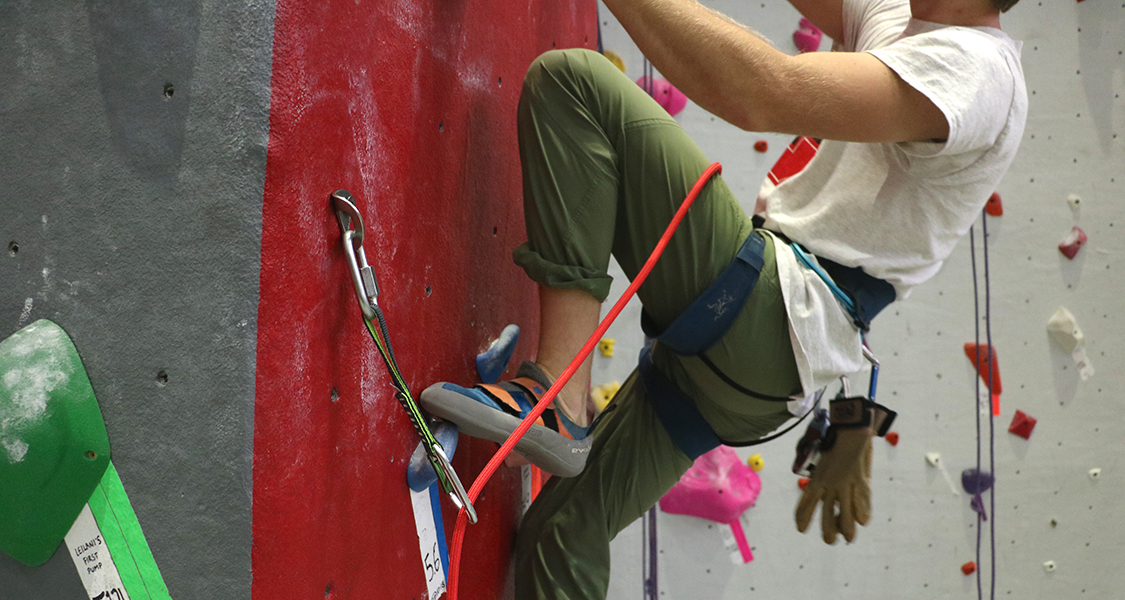Sport Lead Climbing Overview
Video: Clipping Techniques and Hazards
Lead climbing is an exciting opportunity at the Lindseth Climbing Center that affords access to additional mental and physical challenges beyond top roping. However, falls when lead climbing are longer than top roping, with greater risks as well. A successful lead climber is able to manage their risks by climbing and clipping in a controlled, efficient manner, managing their position with respect to the rope, and by knowing how to fall safely. A supportive belayer helps to keep their partner safe by understanding the challenges the climber faces, safely and efficiently managing the slack in the system, and being able to provide an appropriate catch that minimizes potential impacts.
Lead climbing requires more endurance and mindfulness than top roping, as there are more elements to manage. Be prepared to hone your skills on easier climbs. In preparation for lead climbing, practice climbing at a much slower pace, climbing laps on easier climbs, and downclimbing. Stop and tap clips as you pass them to get used to finding stances and rests along the way. Climbers will test on a tall 5.9 graded climb. Belayers will need to learn how to manage slack in both directions using an assisted belay device, such as the Petzl GriGri or the Black Diamond Pilot.

